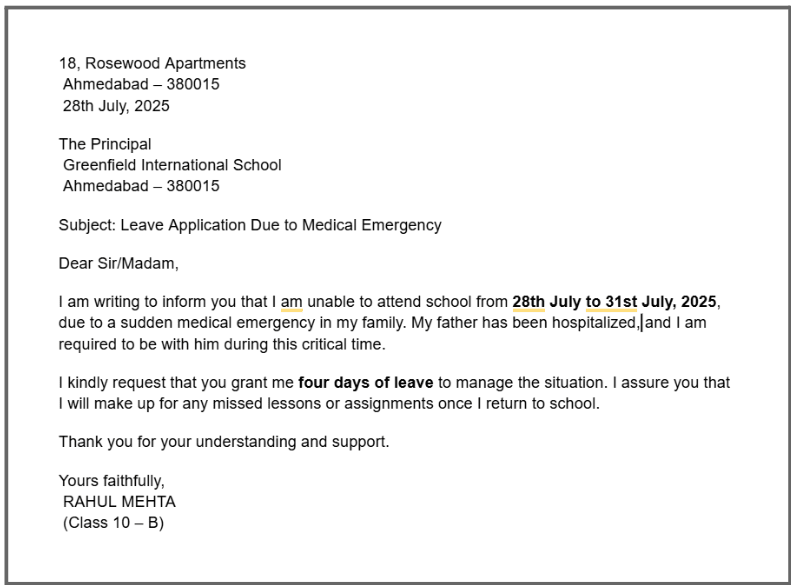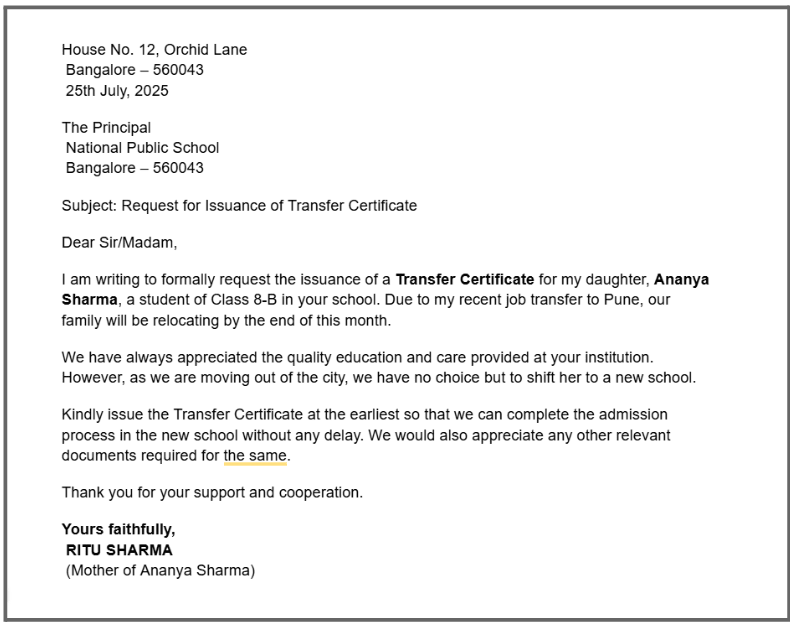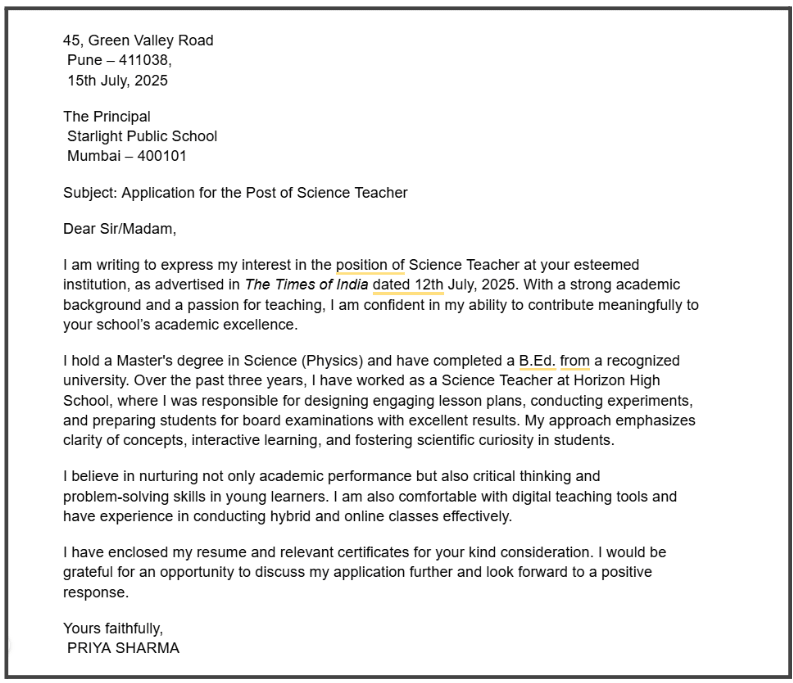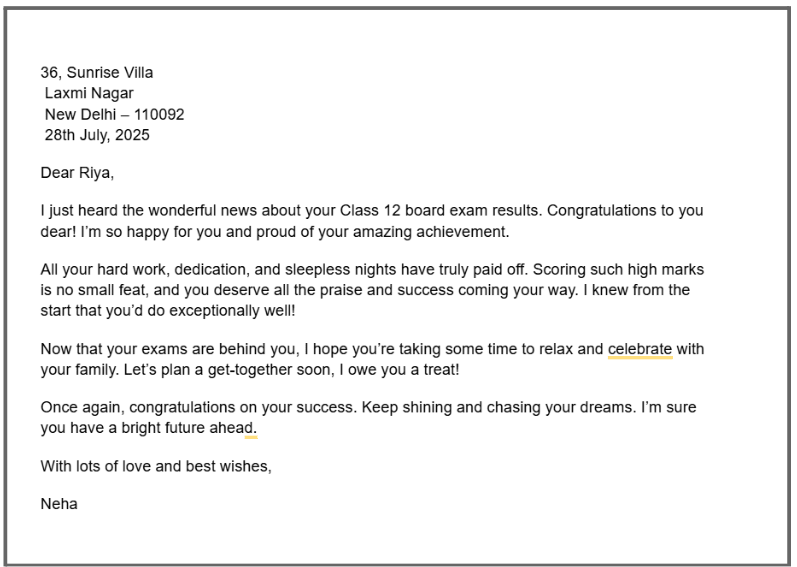Letter Writing
Did you know that letter writing is an essential communication skill you should develop to express your thoughts clearly, whether you're writing to your parents, teachers, friends, or even your grandparents? In this age of smartphones, we rarely write a letter to someone. In earlier days, when telephones and emails were not popular, the only medium of conveying thoughts, messages, and ideas to someone was through letters. Here’s all you need to know about letter writing, including the different types of letters (formal and informal), the structure you should use, and simple examples with easy explanations; so that students from all backgrounds can learn to start their letters with confidence. Scroll down to learn more!
Table of Contents
- What is Letter Writing?
- Types of Letter Writing
- How to Write a Formal Letter
- Samples of Formal Letter Format
- How to Write an Informal Letter
- Samples of Informal Letter Format
- Frequently Asked Questions on Letter Writing
What is Letter Writing?
‘Letter’ refers to a piece of information or a message that you write on paper to share your thoughts, feelings, or news, following a specific format.

While writing a letter, it is crucial to remember these five basic parts of a letter in the correct order, so let’s see the structure of basic letter writing:
-
Sender’s Address: Always start your letter with the sender’s address.
-
Receiver’s Address: You must also include the receiver's address.
-
Date: Write the date after the recipient's address.
-
Greeting/Salutation: This section is entirely dependent on who you are writing this letter to. For example, if you're writing a letter to a friend or sibling, the greeting should be "Dear [his/her name]." If you are writing to your boss, address them as "Respected Sir/Madam."
-
Subscription/closing: A letter ends with a polite note like “Yours sincerely,” “yours truly,” etc.
Types of Letter Writing
Letters can be classified into two main types according to the purpose of the letter. Informal letters, also known as social letters, include friendly letters and notes of invitation.
Formal letters, also known as business letters, include letters of application, letters to higher authorities, and letters to newspapers. Let’s discuss in detail what formal and informal letters are, how to write them, and the sample formats.
- Formal Letter
- Informal Letter
What is a Formal Letter?
Formal letters are professionally written letters that follow a specific and strict format. The writing structure of formal letters is clear, respectful, and more formal than informal letters. If you are writing a formal letter, one thing you should always remember is to draft the letter carefully by providing only the necessary information.
We are writing these letters for various needs, like providing information about your workspace, applying for a job, and raising your concerns about the professional setup.
How to Write a Formal Letter
Every element of the formal letter, from the sender’s address to the closing part, you must follow a proper format. So, here’s how to write a formal letter, step by step:
Structure:
An application to your principal, headmistress, or teacher can be in the form of a leave application, a permission letter, or a complaint letter. The format, tone of language, and style should be adopted.
-
Sender's Address: Write your full address at the top left corner of the page.
-
Date: Place the date just below your sender's address.
-
Receiver's Address: Include the designation and address of the person or department you are writing to.
-
Subject: A clear and concise one-line statement summarizing the purpose of your letter.
-
Salutation: Use a formal greeting like "Respected Sir/Madam" or "Dear Mr./Ms. [Surname]."
-
Body: This is the main content of your letter and is typically divided into three paragraphs:
-
Introduction: Briefly introduce yourself and state the purpose of your letter.
-
Content/Details: Provide all the necessary information and details related to the subject matter.
-
Conclusion: Summarize the information and clearly state your expectations or desired outcome.
-
Formal Closing: End with a formal closing such as "Yours sincerely" or "Yours faithfully."
-
Signature and Name: Sign your name if it's a hard copy, and then write your full name in block letters below the signature.
Samples of Formal Letter Format
Sample 1: Leave Letter Due to Medical Emergency

Sample 2: Request Letter to the school principal requesting a Transfer Certificate (TC)

Sample 3: Job Application Letter for the Post of Science Teacher

What is an Informal Letter?
Informal letters are letters written to friends and family casually and informally to convey regards and updates. You can write an informal letter to your loved ones about your success in academics or describe your recent vacation, your movie-going experience, or anything you want.
When writing an informal letter, you are free to use colloquial language, which would be quite out of place in a formal letter. This does not mean that you can pen down random thoughts that are totally disconnected and make no sense. Wrong spelling, punctuation, and grammar are not allowed, even though the letter is informal and personal.
How to Write an Informal Letter
To help you write an informal letter the right way, here’s the structure you should follow:
Structure:
-
The sender's address should always appear on the top right-hand corner of the page.
-
Date: Immediately below your address, write the date the letter is being written.
-
Greeting: several variations can be used depending on how well you know the person: Dear Mary, Hi Mary….
-
Body of the Letter: This is the main content where you share your thoughts, updates, or stories. You can divide this into a few paragraphs, elaborating on your points in a relaxed and personal tone.
-
Complimentary close: Short comments, for example: Love, Lots of love, Best Wishes, Kind Regards, With thanks, See you soon.
-
Signature: Sign off with your first name below the closing.
Samples of Informal Letter Format
Sample 1: Congratulating your friend on his/her success in the Class 12 board exam

Sample 2: A letter to your friend about planning a trip together

Sample 3: Letter to your friend who just met with an accident – Wishing him a speedy recovery
.webp)
Frequently Asked Questions on Letter Writing
1. What are the five steps of writing a letter?
Answer: Write your recipient's name and contact information (address) and date. Then, move on to the greeting and the body of the letter. End with a complimentary close, your name, and your signature.
2. How do you start off an informal letter?
Answer: Addressing the reader in a personal letter should always be done with the word “Dear," followed by their name and a comma. The name should be how you most often address the recipient in conversations. The salutation should be placed on the left side of the page, two lines lower than the date.
3. What is the formal way to start a letter?
Answer: If you are writing a formal letter, start with the recipient’s address and the date. Then write the standard salutation, “Dear,” followed by the recipient's name, and add a comma after the name; there you go for the body of the letter.
Admissions Open for
Admissions Open for
CBSE Schools In Popular Cities
- CBSE Schools in Bangalore
- CBSE Schools in Mumbai
- CBSE Schools in Pune
- CBSE Schools in Hyderabad
- CBSE Schools in Chennai
- CBSE Schools in Gurgaon
- CBSE Schools in Kolkata
- CBSE Schools in Indore
- CBSE Schools in Sonipat
- CBSE Schools in Delhi
- CBSE Schools in Rohtak
- CBSE Schools in Bhopal
- CBSE Schools in Aurangabad
- CBSE Schools in Jabalpur
- CBSE Schools in Jaipur
- CBSE Schools in Jodhpur
- CBSE Schools in Nagpur
- CBSE Schools in Ahmednagar
- CBSE School In Tumkur











